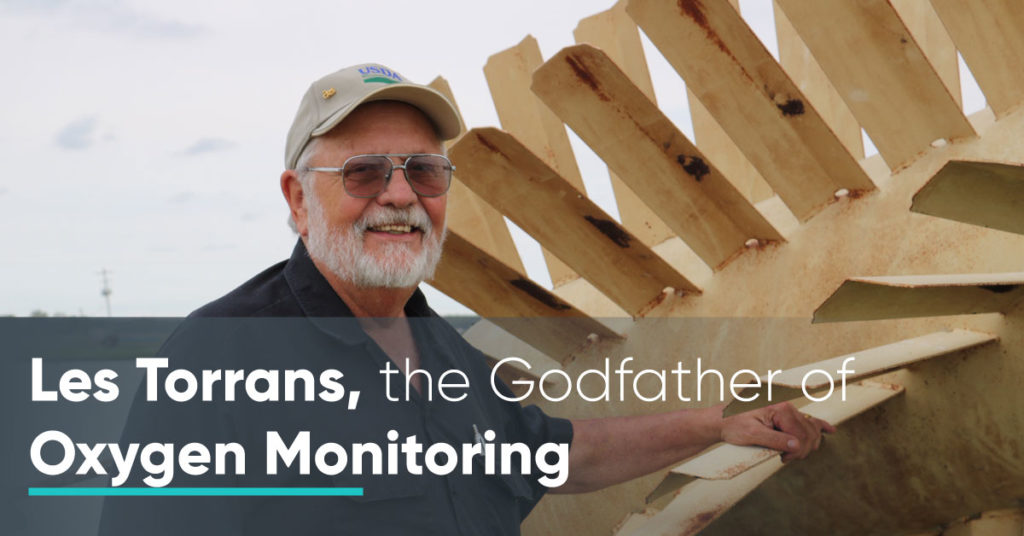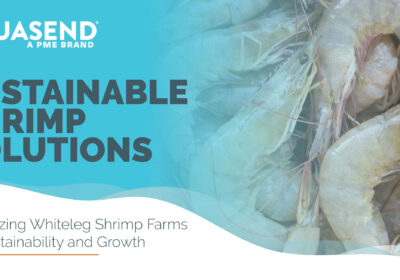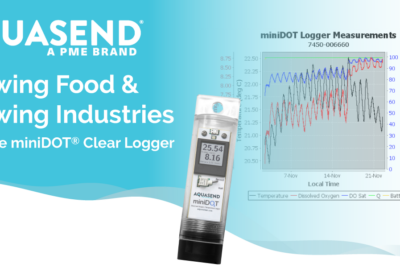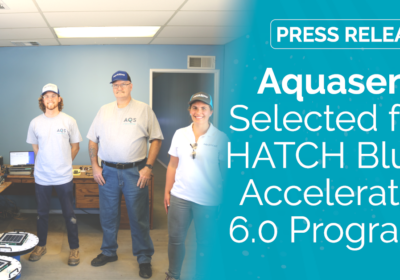Les Torrans, the Godfather of Oxygen Monitoring

Les Torrans, the Godfather of Oxygen Monitoring
Dr. Eugene Les Torrans, sometimes referred to as the Godfather of Oxygen Monitoring, is a fish production specialist focused on the oxygen requirements of catfish. He has been working with the Warmwater Aquaculture Research Unit in Stoneville, Mississippi since 1999.
Aquasend’s CEO, Kristin Elliott, had the pleasure of meeting Les at the 2017 Aquaculture America tradeshow where he invited her to Mississippi to meet farmers and discuss their oxygen monitoring needs the following summer. As an influential figure for many in the aquaculture industry, we wanted to take a moment to reflect on his life and career with an exclusive interview as he prepares for retirement later this year.
How did you first get into Catfish farming and what attracted you to this industry?
When I was in training for the Peace Corps in 1969, our group took a field trip through most of the catfish producing states – Missouri, Alabama, Arkansas, Mississippi, Louisiana, Texas and Oklahoma. We had the opportunity to meet many of the industry’s pioneers, men like Jimmy Kahrs, Rudolf McGehee, Mayo Martin, Fred Meyer, Charles “Bo” Collins, Edgar Farmer, Leon Hill, Vern Hammit and many more.
Most of these men were told by everyone that it couldn’t be done but they were determined to figure out how to raise catfish. Everything from equipment to feeds to processing and marketing had to be figured out from scratch. When their great-great-grandchildren are interviewed down the road and asked what great-great-granddaddy did, they will think a minute and say “He domesticated fish”. That’s a pretty big deal. I’m proud to have met some great men and to have witnessed a part of that history.
What do you find the most satisfying when working with the farmers?
I have lived and worked with catfish farmers in four states: Oklahoma, Arkansas, Alabama and Mississippi. Everywhere I was welcomed with open arms and treated with great respect, in many cases with more than I deserved. I came up with several crackpot ideas, which they usually politely tolerated, and a few winners, some of which they adopted.
The greatest satisfaction is always coming across a farmer that is using some technology I had a part in developing, and is using it to be just a little more profitable. Many scientists may work a lifetime, publishing hundreds of scientific papers, without seeing that. I was fortunate in being in the right place at the right time to see some of my recommendations on pond and hatchery oxygen management adopted and used to increase profitability of catfish farms.
If you could give a farmer three pieces of advice, what would they be?
- Few farmers of any type make enough money to justify the huge investment and long hours required. They do it because they know they are feeding a nation and are proud of that. That’s why outside investors are rarely as successful as independent farmers – they’re in it only for the money.
- Catfish farming has evolved from an art to a science. They need to keep up with all of the latest developments and consider adopting those that fit with their management plan and make sense. Become a member of the CFA and state associations, read The Catfish Journal and the state newsletters, and go to the trainings and workshops put on by your state extension and research personnel and state and national associations. Don’t be afraid to call the people you run into at meetings when you think they could help you. That’s what most of them are paid to do.
- There is never enough time in a day to do everything that needs to be done on a catfish farm. Somehow find the time to do all of the important things. Feed slow and maintain your equipment. It’s much easier to grease a PTO shaft at 3:00 PM even if it’s hot and you’re tired than to swap out a U-joint at 3:00 AM.
What will you miss most in retirement?
Visiting with farmers and talking fish.
What do you hope to see for the future that will benefit the farmers?
The biggest thing would be a gradually expanding market and pond bank prices stable and high enough to turn a profit. The catfish inspection is a start, but I hope that we can establish a fair and level playing field where foreign producers are required to abide by all of the same regulations and standards that our farmers do.
I’d like to see that there is always room for independent farmers with the ability to sell fish in a timely manner. Time will tell on both of those.
We will see more vaccines, better equipment and production systems, and genetically improved fish. For the near future most of our farmers know how to produce a lot of fish – they just need to sell them when they are ready and at a price that will allow them to do it again next year.
What do you see as the biggest challenge farmers will have to face in the future?
There are always technical issues but, one by one, farmers working with research have been able to solve or at least mitigate them. Things like off-flavor, Enteric Septicemia of Catfish (ESC), Proliferative gill disease (PGD), and catfish trematodes can still be problems but can largely be managed around. We can now routinely produce 15,000-20,000 lbs/acre of catfish on commercial farms. Having a stable market for catfish at a price that allows for a profit is essential for the long-term future of the industry.
Processors will have to look at some innovative marketing techniques. We will have to do more than run ads which mainly get existing catfish consumers to eat a bit more. We need to find a way to get a taste of catfish into the mouths of the untold millions of US consumers who have never eaten a catfish and likely won’t ever order catfish in a restaurant – that’s the only thing that will get them to choose catfish when there are so many other choices.
How important is oxygen, and water quality, monitoring to the livelihood of the aquatic species?
There’s an old saying that goes “If a man only has a hammer, everything in the world looks like a nail”. Working with oxygen for much of my research career it’s easy to believe that successful aquaculture begins and ends with maintaining adequate oxygen. But the fact is life requires oxygen and constant monitoring is necessary to maintain it. Other factors like ammonia, nitrite, carbon dioxide, algal populations, off-flavor compounds and temperature can all play a role at times, but without oxygen our crops are dead in minutes. That’s where the monitoring comes in. When I first got started in catfish (in the 1970s), I was told by one industry pioneer that “if you want to grow catfish you have to be on the pond bank by sunup”. If you did that now all you would do is count dead fish. With the intensive production systems now needed to be profitable, almost everyone has an oxygen monitoring and control system of some type. Minutes count.
Do you have a funny/interesting story that happened to you in your career?
The catfish industry is full of interesting people and stories. There have been several books written but most only scratch the surface. To hear the best, you have to get two or three old-timers together in a hotel room with a bottle. You can’t make most of that stuff up. Here is a mild one, with the names changed to protect everyone.
In one of my past lives I was a university professor. A good friend of mine, who we will call “Bubba”, bought a small catfish farm and was managing it himself. He asked me to keep my eyes open for someone who would like to work part time. A student of mine, who we will call “Pam”, asked me if I knew of any part-time work, especially in biology. She was a smart, pretty, long-legged girl so I figured Bubba wouldn’t mind if I gave Pam his number. I heard a few days later from Bubba that he hired her, and she was a great worker, which knowing her I wasn’t surprised.
A few weeks later I saw Pam in the hall and asked how things were going. She said “Great” and that she really loved working on the catfish farm. Then she said, “Bubba saved my life last week”. I asked her what happened. She said that they were seining catfish (no tractors, the old-fashioned way), and it was hot, so she was wearing short shorts. As they were bagging the catfish up to turn into a cage, one of the catfish spined her through the seine in the middle of her thigh.
“Bubba said that if he hadn’t been there to suck the venom out, hard telling what would have happened”. I said nothing, but the next time I saw Bubba, I said “I heard you saved Pam’s life the other week”. Bubba turned beet red, and said “Yeah, I’m sorry about that, but opportunities like that don’t come along very often on the farm”.
You have some great jokes! What is your favorite (PG) joke?
Unfortunately, none of my favorites are PG. Take your pick from some of my tier 2 jokes.
- A couple was Christmas shopping at the mall on Christmas Eve and the mall was packed.
As the wife walked through the mall she was surprised to look up and see her husband was nowhere around. She was quite upset, because they had a lot to do. But, because she was so worried, she called him on her mobile phone to ask him where he was. In a calm voice, the husband said, “Honey, you remember the jewelry store we went into about 5 years ago, where you fell in love with that diamond necklace that we could not afford and I told you that I would get it for you one day?”
The wife choked up and started to cry and said,
“Yes dear, I do remember that jewelry store.”
He said, “Well, I’m in the bar right next to it.” - An apparent Drunken Cowboy lay sprawled across three entire seats in a posh San Antonio theater. When the Usher came by and noticed him, he whispered to the Cowboy, “Sorry, Sir, but you’re only allowed one seat.”
The Cowboy just groaned but didn’t even budge.
The Usher became more impatient and insistent: “Sir, if you don’t get up from there I’m going to have to call the manager.”
Once again, the cowboy just groaned. The Usher marched briskly back up the aisle, and in a moment, he returned with the manager.
Together the two of them tried repeatedly to move the cowboy, but without success. He just laid there in a dazed stupor.
Finally they had enough and summoned the police.
A Texas Ranger arrived, surveyed the situation briefly, then asked, “Alright buddy what’s your name?”
“Sam,” the Cowboy moaned.
“Where ya from, Sam?” asked the Ranger.
With terrible pain in his voice, a grim expression and without moving a muscle, Sam said, “The Balcony.”
Bridging the gap between technology and farmers
Les Torrans, over the course of his career, paved the way for Aquasend to help bridge the gap between technology and what the farmer truly needs in order to be successful and efficient.
“His knowledge, experience and understanding of how oxygen impacts fish health and water quality has been improving the aquaculture industry for decades and will be implemented and used for decades to come. Thank you Les!” – Kristin Elliott, Aquasend CEO


